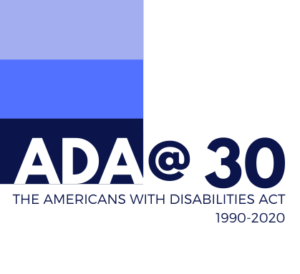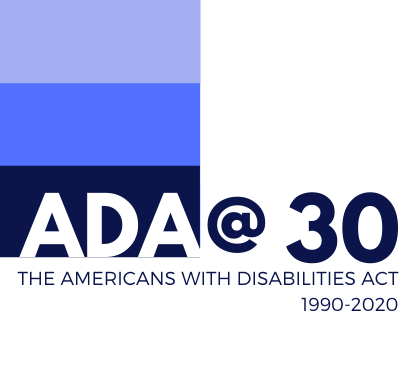
Category: Uncategorized

ABILITIES VIRTUAL EXPO- Online Globally
 Ready for your
Ready for your
Abilities Virtual Adventure?
Global pandemic or not, you still need access to game-changing products, services, education, and fun! Register for free today and, connect with extensive disability resources on November 20-22.
ABILITIES VIRTUAL EXPERIENCE
November 20-22, 2020
Online Globally
Accessible 24 hours a day starting Friday, 9 am PST
Live host, workshops and adaptive activities: 9 am – 5 pm PST
We have just the thing
You will be clicks away from finding that device or service to make your day-to-day challenges a little easier. Peruse exhibitor booths, check out live product demos and interact with companies in real-time…all from the comfort of your couch.
For more info, visit https://www.abilities.com/virtual
Originally printed in the
STROKE AND TRAUMATIC BRAIN INJURY (TBI) LIFE MAGAZINE
 September 2020 Vol. 2 Issue 5
September 2020 Vol. 2 Issue 5
Taking Care of the Caregiver: The Guilt, The Why, and the How
By Joan Enker
The Guilt
Being a caregiver becomes the Singular Focus and the Singular Purpose of the Caregiver’s life. It becomes the Caregiver’s identity. Because the role is so consuming and binding it is difficult for the Caregiver to realize what is needed for him/herself. In order to sustain the caring, Caregivers need many things. A Caregiver needs to take breaks in order to maintain a high level of functioning and of caring. This is very difficult as once the Caregiver attempts to take a break and nourish him/herself there is guilt, which immediately puts an end to the break. The guilt is complex.
We experience guilt that we are not actively engaged with our loved one. We feel negligent. We have guilt that if we are not the one taking care of our loved one then our loved one is being deprived because our caring is from love and therefore superior to other’s caregiving. We have guilt that we are not doing enough. Guilt that sometimes we don’t feel like being caregivers. Guilt that sometimes we get angry. Guilt that we are impatient. Guilt that we would want to take a break when our loved one cannot take a break from his/her brain injury. Guilt that no matter what we do we can’t magically take away the brain injury. Guilt that we didn’t prevent the brain injury in the first place.
Fear can sometimes present itself on the wings of guilt. Fear that if we are not taking care something terrible will happen; our loved one will fall, be hungry, feel abandoned, be overmedicated, be undermedicated, feel alone, or become confused. In our powerful, magical thinking minds only we the caregivers can prevent these occurrences. These are all real feelings that prevent us from taking care of ourselves. We are doing the best we can do and yet we feel it is never enough.
The Why
The analogy for taking care of oneself is often given as that of needing oxygen masks on a plane. People are instructed to put on their own mask before helping anybody else. This analogy doesn’t work for Caregivers. Putting on an oxygen mask takes a moment. Engaging in self-care is an ongoing activity. However, self-care is oxygen for the Caregiver.
Without self-care, there is “bone tired” fatigue. Being “bone tired” affects our ability to have clarity, to have patience, to have energy, and an ability to remain calm. Whether or not our care is compassionate and loving is influenced by how “spent” we feel. Our ability to be effective listeners and engage in meaningful dialogue is impacted by our fatigue. Responding appropriately and effectively in any given situation is affected by our physical and mental fatigue. All of our responses in turn affect our loved one and how they respond to us and how they respond to their environment, ultimately affecting their behavior and how they feel.
So many reasons to engage in self-care. Yet, I can hear in my head, all the reasons not to engage in self-care. Who has the time? Who has the resources? Who has the help to do it? I know, I hear you but….what are the consequences? The normal feelings that come with being a Caregiver: fatigue, discouragement, anger, grief, despair, guilt, and ambivalence. Taking care of ourselves can help keep some of the overwhelming feelings at bay. None of us received any training on how to be a caregiver. None of us received any training on how to take care of ourselves, yet we learn by doing what needs to be done.
How
There are two components in HOW to engage in self-care as a Caregiver. The first is the toolbox of things that are done regularly, almost a prophylactic approach. The second is the approach you take at the moment when things start to fall apart.
What can be done prophylactically to give the Caregiver the rest, the time away, friends to share joys and sorrows, and the time to recharge batteries? When my stress level became intolerant, I took a course in Mindfulness-Based Stress Reduction. I learned to be aware of my own body’s signals when I was reaching a breaking point, giving me the opportunity to choose how I would act and not be reactive. I learned that even taking three minutes to stop and breathe was enough to calm me down. I sat in a chair and breathed into the slow count of four and then out to the slow count of eight and then repeated the cycle several times. With this simple exercise, I began to feel that I had control over my own reactions. My responses slowed down giving me time to choose how to best respond.
We, the caregivers, are caught up in giving to our loved one ignoring our own needs. Giving ourselves three to five-minute “time outs” to sit and focus on our breath helps to create boundaries that enable us to have time and space. Keeping a journal is a reflective outlet. Setting a schedule for ourselves with regular appointment times for us to exercise, stretch, and/or meditate will nourish us. We can give ourselves gifts. Buy a magazine, sit down and read it for ten minutes. Schedule a phone visit with a friend. Drink a cup of tea while listening to a favorite piece of music. None too time consuming yet nourishing for the soul.
Having an activity that is just for your own benefit, such as a hobby, helps to keep part of ourselves from being consumed by caregiving. It can help keep parts of ourselves alive while bringing connection to others and stimulation to us, a mini-vacation.
How to take care of ourselves when things begin to fall apart is the second component. Taking time out to breathe and slowing down our reactions is one technique. Slowing down provides time to think and respond instead of reacting. Exiting from a situation, stepping away, can help to de-escalate and decelerate a situation that is beginning to spin out of control. I’m not advocating exiting from an emergency but there are times when we don’t need to respond immediately.
There are times when calling someone to come and help is what’s necessary. Having one or two people who you know you can rely on is important. Speak with your loved one’s doctors about a plan that you can put into action in case of an emergency. For those times when you feel overwhelmed and you need a good cry, give yourself permission to do so. Tears can be restorative.
One of the most difficult things to put together is a respite plan. It takes planning for coverage to make it happen. Cobbling together family, friends, or an aide for a few hours or even for a day can make having a break a reality. Don’t let the stress of the cobbling stop you. Each case and each circumstance is different.
None of this is easy and that’s why there are support groups, counselors, and associations to help us navigate these waters. It takes practice to become accustomed to taking care of ourselves. A distressing thought Caregivers have is “what would happen to my loved one if I wasn’t able to care for him/her?” That question is one of the major reasons to care for yourself. It’s not oxygen, like on a plane. Being a Caregiver is not a short sprint, it’s running a marathon every day, and to do that it takes training and taking care of the Caregiver.
Happy 30th, ADA!
| When Judy Heumann was growing up in the 1950s, the New York City school system barred her from attending school and instead gave her only two and a half hours a week of home instruction. Why? She was in a wheelchair, as a result of polio, and school administrators refused to accommodate her in a classroom. |
| Heumann grew up to become a leading advocate for disability rights. She helped organize a 1977 protest that occupied a federal building in San Francisco and focused national attention on discrimination against the disabled. After a long political fight, President George H.W. Bush signed the Americans with Disabilities Act on July 26, 1990 — 30 years ago this Sunday. |
| Few modern laws have had as big of an impact on Americans’ lives, and the anniversary has led to reflections on what the A.D.A. has — and has not — accomplished. (Here is a package of Times stories.) |
| Today, no child can legally be denied schooling because of a disability. Workplaces and public spaces have been transformed. And many nondisabled people have benefited as well: I often felt grateful for the A.D.A. while pushing a stroller around New York (and not having to lift it over curbs). |

| But it’s also clear that disabled Americans continue to endure inequities: |
|






